Ultraviolette F77 review, test ride
Here’s what India’s first sporty electric motorcycle feels like.
Published on Nov 21, 2019 09:00:00 AM
1,14,007 Views
Follow us on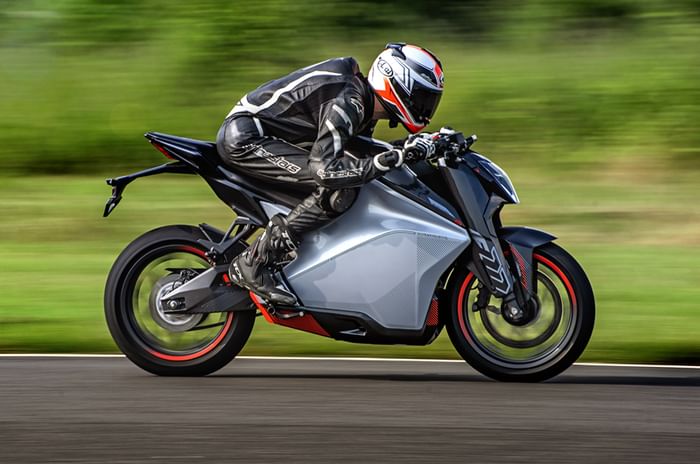
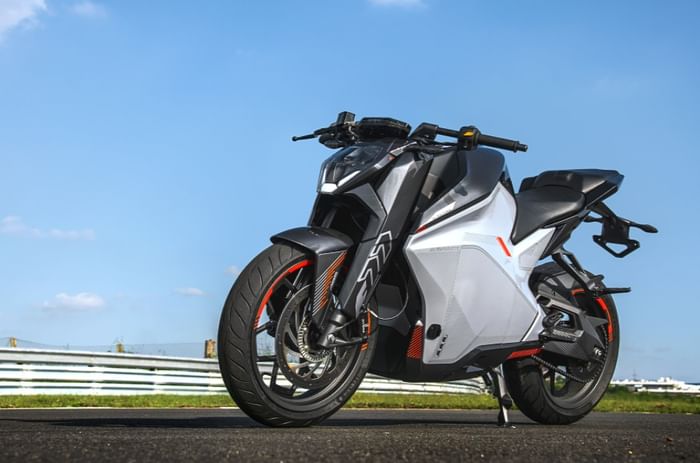
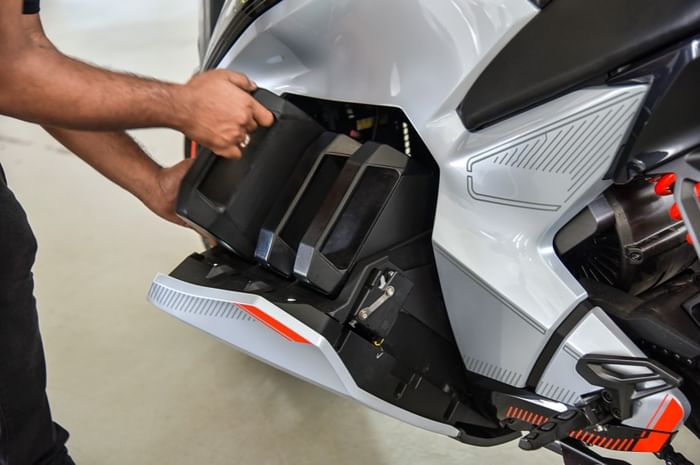
A few months ago, we brought you a review of a brand-new electric motorcycle prototype that’s designed and developed in Bengaluru. That bike has now been officially unveiled as the Ultraviolette F77, and we’ve now got the chance to briefly ride it at the MMRT. Here’s what India’s first sporty electric motorcycle feels like.
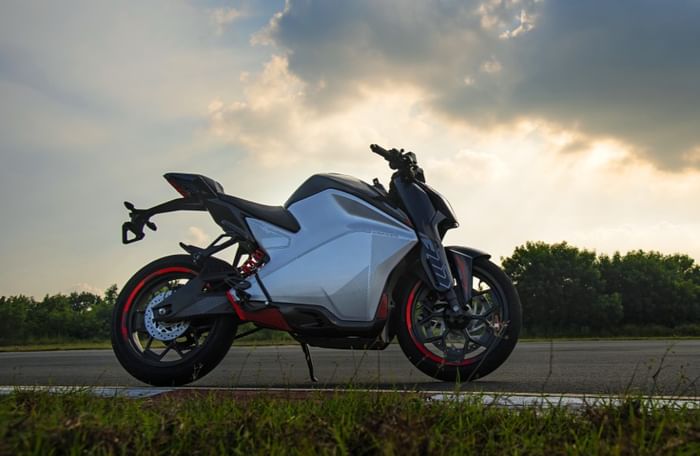
What is it?
It is a major sign of confidence in their product’s ability, when a company wants you to experience it on a proper racetrack. And why not, because the F77’s spec sheet tells a very interesting tale. Built on a bespoke trellis frame chassis, this bike runs a frame-mounted electric motor that claims 33.5hp and a seemingly nuts 90Nm of torque. Experience has now led me to understand that just because an EV’s torque number matches that of a far more powerful petrol-engined machine, it doesn’t mean it will be anywhere close to being as fast. The power figure tells the bigger story and this one is still very healthy, and right up there with the likes of the TVS RR 310. Of course, there is far more to the F77, but these numbers will dictate the riding experience, so that’s where we’ll begin.
How does it feel?
The motor powers the rear wheel via a chain drive and there is no clutch or changing gears to bother with – just twist and go. Unfortunately, we had very little time to actually ride. I just managed one full lap of the track and the rest of my 20-odd minutes of time were dedicated to the cameras. Even in such little time, it was clear that the initial acceleration rush is where the fun’s at. Ultraviolette claims a 7.5sec 0-100kph time and the initial acceleration surge certainly feels like it could be capable of that. The strong pull begins to taper past 80kph, but it still gets up to about 115-120kph without a struggle. Ultraviolette claims a top speed of 147kph, but I suspect this will take some distance to achieve. On my one fast lap, I noticed a top speed of 134kph, which puts the Ultraviolette’s performance more in line with 200-250cc machines, rather than the 300cc competition that the spec sheet puts it against.
The good news is that the throttle response is still very smooth and natural feeling, just like on the prototype I rode previously. There’s an interesting and clearly audible whine from the motor and reduction ratio gears, but when a bike makes so little noise, you tend to hear everything else much more clearly. That’s when you realise that the chain can be quite loud – a quiet-running belt drive would have been nicer, even though it would be more expensive and not as easy to keep maintained via the Indian roadside garage ecosystem.
Out on the track, the Ultraviolette’s frame proves to be formidably sharp, thanks to a relatively short wheelbase and an aggressive 23.5-degree steering rake angle. With widely-spaced clip-ons that aren’t too low, it’s very easy to rapidly tip the bike into a corner. In fact, you need to be measured with your movements because the F77 responds as fast, if not faster than an RC 390, and it’ll be interesting to see how this fares in the real world with mid-corner bumps and potholes.

With an impressively low kerb weight of 158kg, this bike loves attacking corners, but the rear suspension felt a little too soft close to the limit and that’s where the expensive Metzeler M7 RR tyres earned their keep. The F77 feels a tiny bit on-edge at the limit, but Ultraviolette tells us they’re still working on fine-tuning the suspension setup. Things may stand to improve, but for now it’s clear that this is a fun, sharp and responsive machine and the same goes for the 320mm front disc
brake setup.
Still some way to go
As it turns out, a lot on the bikes we got to ride was still in the process of being fine-tuned and they weren’t as production-ready as we thought. The 43mm USD fork currently on the bike will become a 41mm unit on the production model, but the company says it will feel very similar. Much of the features on our bike were yet to be enabled as well. The TFT display was a mock up, with a smart phone running underneath, and the switchgear wasn’t the final spec as well, which meant we couldn’t control any of the electronic features that would be available on the TFT display. As a result, we couldn’t experience switching between the three riding modes (the bikes we were given were set to near-peak performance) and we couldn’t try the adjustable re-gen braking system either. We’ll also have to wait a little longer before getting to try the many connected features the bike has that will work via an in-built 4G SIM. What we know is that the F77 uses a nine-axis IMU, similar to what you find in a smartphone, and this will enable many clever features, including sending an alert to a saved contact in case a crash is detected.
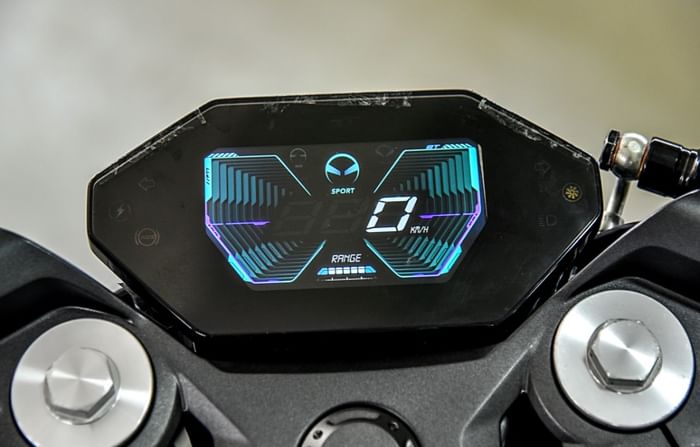
One cool feature we did get to experience was the motorised battery compartment that glides open to allow you access to the battery packs. Ultraviolette has cleverly split the battery into three individual packs, each weighing 8.6kg. This allows you to remove one or two if you need to charge them externally, without pulling a hernia. The packs work together in parallel and the company recommends running all three, or at least two at all times.
Charging takes 5 hours with a standard charger and 1.5 hours with an optional fast charger. There’s also going to be an optional portable ‘powerbank’ charger that can be carried in a backpack. Ultraviolette claims groundbreaking energy density levels from their in-house battery pack design and that, according to the company, allows a real-world range of 130-150km, despite the relatively modest total battery capacity of 4.2kWh. This will, of course, need to be put to the test. We also can’t comment on how performance fares as the charge level drops, partly because we had such little time to ride, but also because the company swapped out the battery packs once in the middle of our ride time.
A premium experience
The F77 will be priced between Rs 3 lakh and Rs 3.25 lakh on road, when it goes on sale late next year, starting exclusively in Bengaluru, with other cities to follow. At this price, you certainly aren’t getting a similar price-to-performance ratio as a petrol powered machine. What you will be, however, is an early adopter, and early adopters of any technology have never had it cheap. The Ultraviolette promises exciting performance for the urban jungle and it’s also going to be a complete tech fest. And, of course, there’s the way it looks.
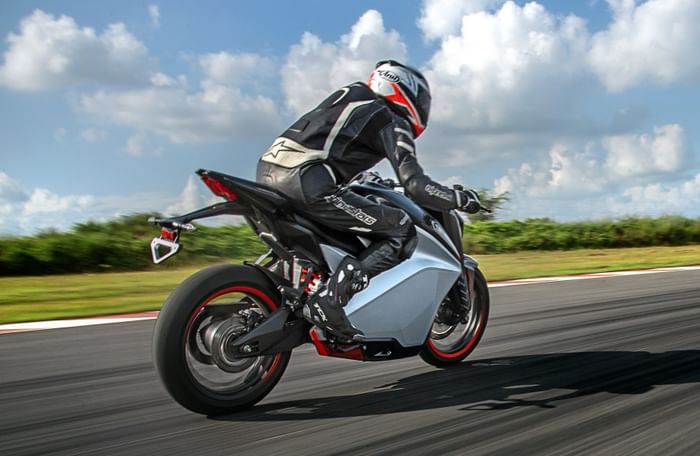
This is one freaky, sporty looking bike and there’s nothing else like it out there. The proportions are unusual, with a mass-heavy fully-faired side section. This is offset by an individual naked bike-style headlamp, with suspension shrouds that create a muscular look. It’s not a classically pretty design, but it has heaps of presence. Quality also seems to be a priority and there are many small details like the foot peg holders, superbike-like aluminium swingarm and neatly designed wheels that suggest this will be a premium machine.
I wish we’d ridden these bikes when they were fully ready for customers, but for now Ultraviolette still has a fair amount of polishing and fine tuning to carry out. The good news is that, as deliveries start only in October 2020, they have plenty of time to get the job done well. For now, it’d be smart to wait until we get to ride the final production machines, but I’ve got a pretty good feeling the wait will be worthwhile.
Tech Specs 
Copyright (c) Autocar India. All rights reserved.


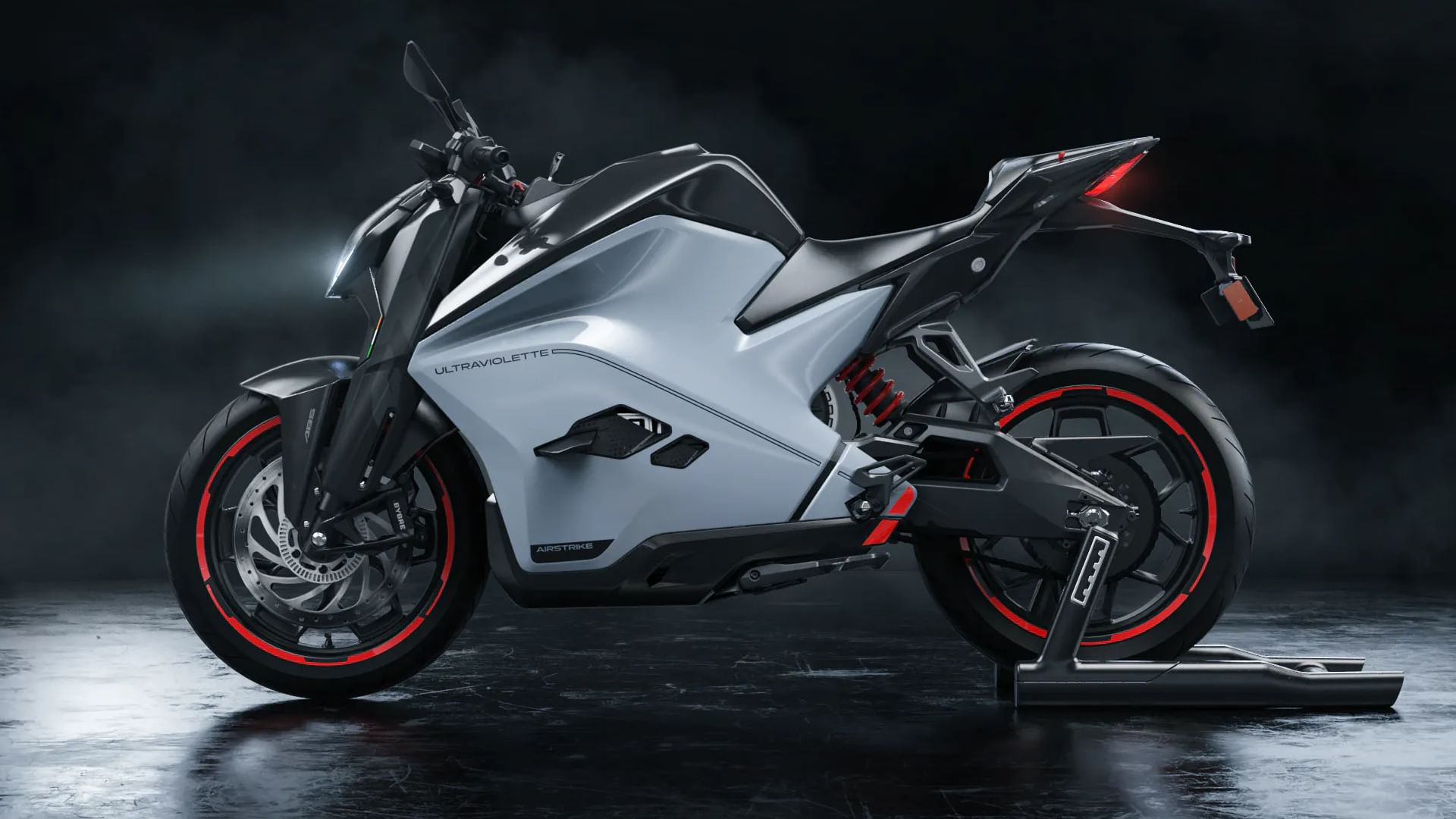






 Wheels and Tyres
Wheels and Tyres Dimensions & Chassis
Dimensions & Chassis Engine
Engine Suspension
Suspension Brakes
Brakes Range
Range
Comments
Member Login
Personal Details
Nazir Khan - 838 days ago
Dear UV, I am shocked to see this refund process which i had never made,,i would be very seriosue to know who the hell has done this return/refund process without my consience. Nazeer
Vites Bhandari - 973 days ago
any update??? or dates????